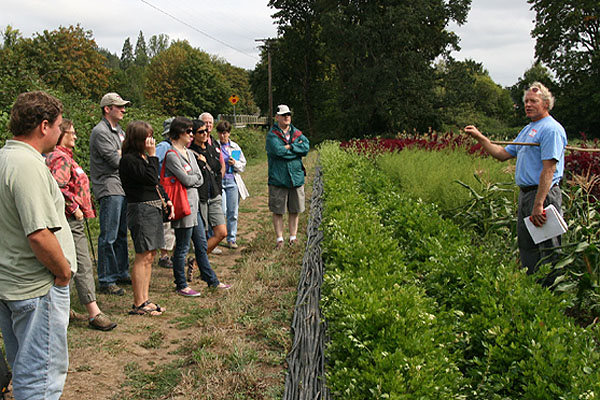(Copyright by and reproduced with permission from Frank Morton, Wild Garden Seed.)
Society Suffers Their Over Application
“The costs and headaches involved in working out ‘who owns what’ and ‘who owes what to whom’ can balloon into what economists refer to as the ‘tragedy of the anti-commons’ and render the development process unfeasible.“
—Graff et al. Access to intellectual property is a major obstacle to developing transgenic horticultural crops. California Agriculture, 2004.
What began in 1930 as a restrained attempt to reward horticultural inventors like Luther Burbank (the self-educated, self-styled, plant genius of his day), has become a kind of free-for-none piñata hunt entrancing corporations and university IP offices for a decade. Everyone with an IP portfolio is blindly swinging over their heads, hoping they will get their reward when the prizes come raining down.
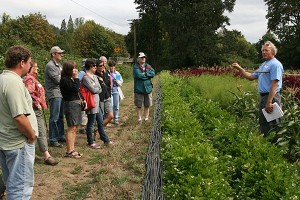
The crux of the issue is that the traits of plants are long evolved and interrelated; they are interdependent on gene expression, environmental cues and stresses, metabolic pathways, protein functions, etc. Equally, the process of breeding is cumulative, subsuming, and reiterative—with each cycle of reproduction aspects of genetic information can be conserved, modified, or removed by the breeder or the environment.
Many traits (like yield) are quantitative in nature and not clearly measurable or stable across environments. Traits can also arise from different sources or genetic recombinations than those claimed in patent descriptions, which raises the question of competing claims for analogous traits with differing parentage. In this kind of legally threatening environment, many breeders feel constrained in their freedom to operate, fearing that a patent claim by competitors could undo many years of work and investment. This is as true for Wild Garden as anyone.
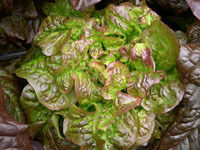
Different corporations seem to have taken widely divergent approaches to their IP claims. In Europe, the preponderance of patent claims for non-transgenic crops are held by a few competing seed giants (who all lay claims for “downy mildew resistance,” “downy mildew resistance combined with aphid resistance,” “downy mildew resistance combined with aphid resistance in a plant having red oak-shaped leaves of substantially equal size,” as well as competing claims to lettuce plants with “multileaf” and “single-cut salad” traits.
These EU seed corporations appear to have prepared for patent warfare, similar to what we now see in high tech and gadgetry environments. Interestingly, the Japanese horticultural breeding giants Sakata and Takii do not seem interested in applying for patent protection, nor even PVP, for their recent innovations in leafy greens and vegetables.
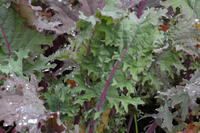
Perhaps they have made contrary assessments of the utility of patents and ownership claims on crop plants. If one takes a broader view of “freedom to operate,” the costs and constraints of claiming patents on common vegetables just might not be worth the bother. Better to move ahead.
Wild Garden Seed has never sought PVP for any of our varieties, much less patents. First, it costs too much and takes too long. But mostly, I’m still conditioned to believe in the freedom of the natural world, including plants and their traits, and I still feel like a participant in its everyday wildness, not an owner of it.
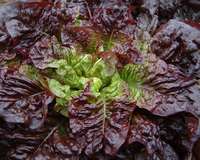
I respect the law in regard to seed ownership, and have made it a practice not to purchase or grow utility patented seed, or reproduce PVP seed varieties. I don’t want patented material to even have a chance to cross into my genetic palette.
This keeps my heart perfectly pure when I come to the issues of patent infringement, and the risks of being sued over my breeding work. I feel I need this deniability because the traits I work on (in lettuce, especially) sound like the same traits that I read claims for in utility patent applications—disease resistance, intense coloration, red pigmentation of heart leaves, leaf gloss, bite sized leaves, ease of harvest for salad greens, deep incision of oak-type leaves, fancy indentations and ruffling of the leaf margins…for all I know some of my lettuces may be resistant to the cranberry (red) lettuce aphid, a claim of many recent lettuce patents. I’ve never tested them for this trait.
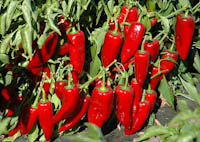
When it comes to earning money to offset the expense of breeding, we include that in the cost of newly released varieties, which is one reason new lettuces cost more than old. When folks purchase new lettuces, they support developing new lettuces. When my friends and friendly competitors wish to grow our original varieties for resale into the same market we primarily sell to (seed companies and commercial growers) we ask for a 10% royalty on sales to support our breeding work.
Not everyone wants to do this, and no one is required to; it is only a supportive gesture. When others want to grow and sell our farm-bred varieties in small amounts in local markets, we don’t ask for anything other than attribution where it’s appropriate.
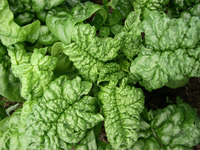
But really, the reason that plant innovation pays is because we all want to try something new that may be better than what we have now. The whole point of breeding crops non-stop is because the world is breeding and evolving around us, non-stop—new bacteria, fungi and insects, new weather patterns, cropping techniques, market trends, and farmers.
Wild Garden Seed intends to keep doing what it has been doing naturally for thirty years; growing our seeds, improving our stocks, and sending them out into the world.
.
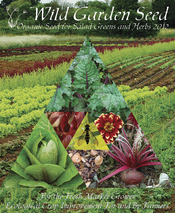
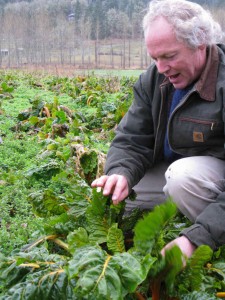
About Frank Morton, Wild Garden Seed
Frank Morton has been breeding and selecting seed for more than 30 years on his farm, Gathering Together Farm, in the western Oregon town of Philomath.
He sells organic seed to farmers and serious gardeners through his Wild Garden Seed catalog.
(All photos courtesy of Frank Morton, unless otherwise noted.)

